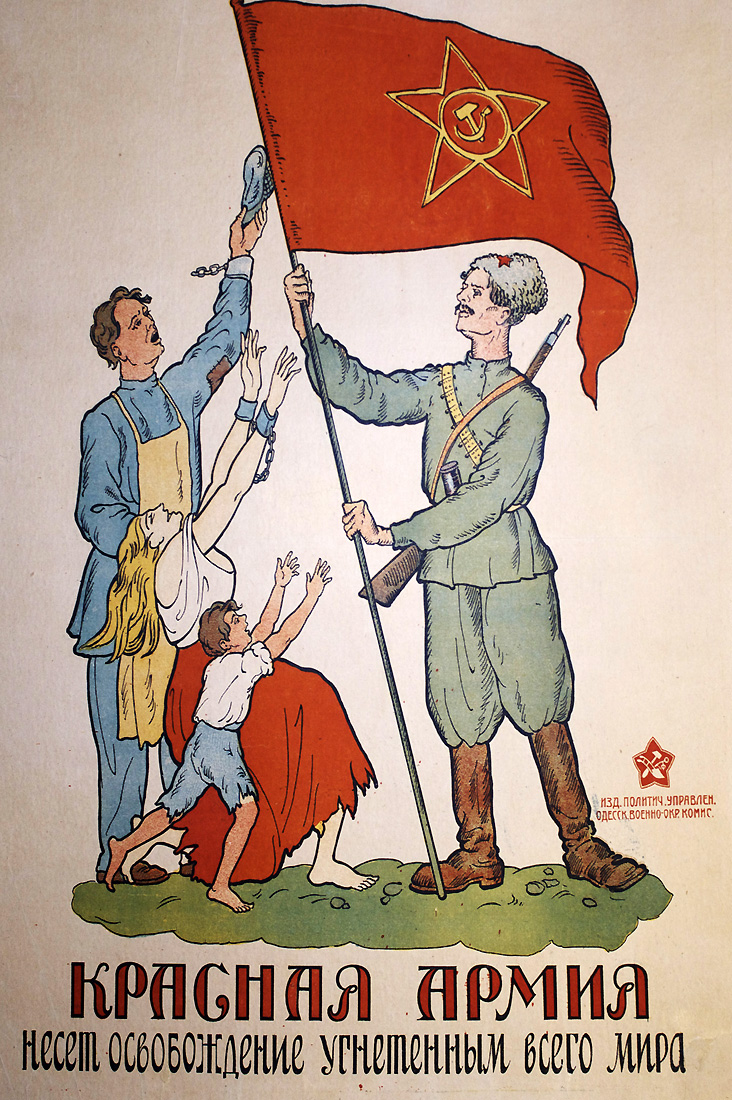
El Ejército Rojo trae la liberación a los oprimidos del mundo.
Número de Cartel: PP 471
Información sobre el cartel: This poster uses both emblems of the Soviet Union. The hammer and plough inside the red star (signifying unity of peasants and workers) is at the lower right. This is the earliest emblem of the Soviets and was first used as a badge for the Red Army in 1918. It was officially approved on April 19, 1918. The hammer and sickle (seen on the flag) was used as early as 1917 as a symbol of the union between industry and the peasants. It was reportedly designed by the artist Evgenii Kamzolkin and was approved by Vladimir Lenin at the Fifth All-Russian Congress of Soviets in July 1918. The Soviets depicted it on the state seal of the Council of People's Commissars of the RSFSR thereafter. In August 1918, the hammer and sickle officially replaced the hammer and plough.
Tamaño: 26x23
Tipo de cartel: Litografía
Fecha de publicación: 1921
Información técnica: Publication of the Political Directorate of the Odessa Military Region Commissariat
Fuentes:
Siegelbaum, L. H., Suny, R. G. (1994). Making workers Soviet: Power, class, and identity. Ithaca: Cornell University Press.
Stites, R. (1991). Revolutionary dreams: Utopian vision and experimental life in the Russian Revolution. New York: Oxford University Press. (hammer and plough symbol)
Yanzuk, A. (1966) Zdravstvu, Moskva! Moskva: Moskovskii rabochii. (Evgenii Kamzolkin)
En el catologo: PP 471 Civil War
Artista: Artist Unknown — неизвестный художник
The artist's name on the poster is not indicated. By assigning Artist Unknown to a poster it also could mean the artist used a chop mark whereby no signature is seen thus rendering the artist's identity anonymous.
Leer más...
Imprenta: Printer not indicated —
Editorial: Political Directorate of the Military Region [Ukraine] — Политуправление Военного округа [Украина]
The Military Region of Ukraine was formed during the Ukrainian-Soviet War that was fought from 1917 until 1921. The war was a conflict for the control of Ukraine and it was fought between Ukrainian nationalists and Polish-Ukrainian forces against pro-Bolshevik Ukrainians and Soviet-backed Russians. The Second Winter Campaign of 1921 (of the Russian Civil War) is generally recognized as the end of the Ukrainian-Soviet conflict. Historically, military regions came about during the Imperial Tsarist period to administer military ...
Leer más...